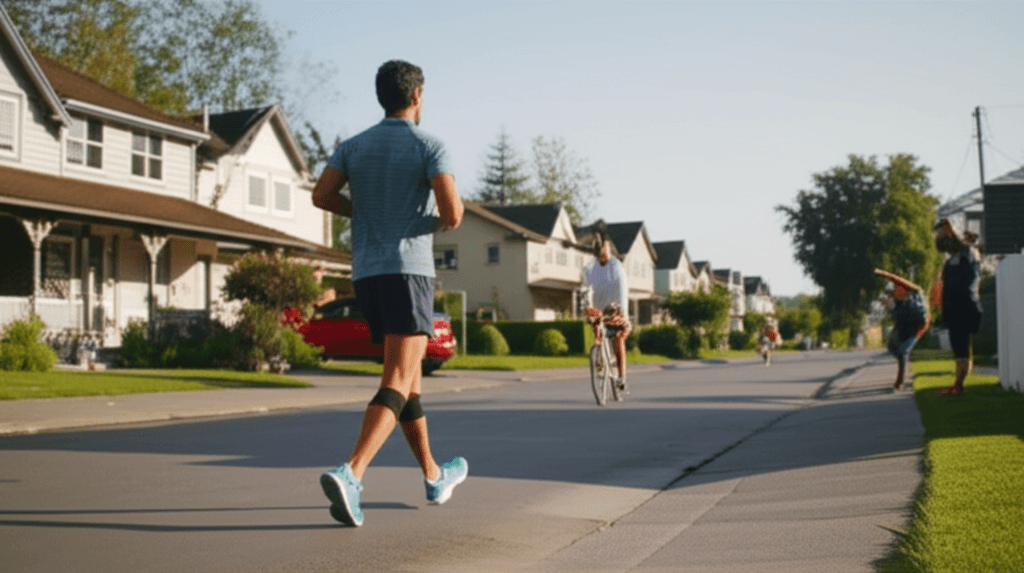Why Exercise Helps HbA1c
Embarking on a journey to embrace a more active lifestyle is a profoundly positive step for anyone looking to support their overall health, especially those focused on managing their blood sugar levels and, consequently, their HbA1c. The good news is that physical activity doesn't have to be a daunting task; instead, it can be an enjoyable and integral part of a balanced life. Integrating regular exercise into your routine is not merely about managing a specific health metric; it's about fostering a sense of vitality, improving mood, enhancing sleep quality, and building a stronger, more resilient body. This comprehensive approach to well-being naturally extends to how your body processes glucose, contributing positively to your blood sugar management efforts.
How It Lowers Blood Sugar
Understanding the interplay between exercise and blood sugar is fundamental. When you engage in physical activity, your muscles utilize glucose for energy. This process helps to remove glucose from your bloodstream, leading to a general supportive effect on blood sugar levels.
Over time, consistent physical activity can also contribute to improved insulin sensitivity, meaning your body’s cells become more responsive to insulin. This enhanced sensitivity allows glucose to enter cells more efficiently, further aiding in blood sugar management. It’s a beautifully designed system where your body responds to movement by becoming more efficient at managing the fuel you provide it.

Aerobic Activities to Try
Let's delve into the different types of exercises that can be beneficial, keeping in mind that variety is often the spice of life, and finding activities you genuinely enjoy is key to long-term adherence. One of the most accessible and widely recommended forms of exercise is aerobic activity. This includes anything that gets your heart rate up and keeps it there for a sustained period. Think brisk walking, jogging, cycling, swimming, dancing, or even gardening with enthusiasm.
These activities not only contribute to cardiovascular health, strengthening your heart and lungs, but also play a significant role in helping your body use glucose more effectively. Regular aerobic exercise can help you maintain a healthy weight, which is another crucial component in the broader landscape of blood sugar management. Starting with shorter durations and gradually increasing the time and intensity as your fitness improves is a gentle yet effective way to build stamina and confidence. For instance, a daily 30-minute walk can make a remarkable difference over time, providing both physical benefits and a refreshing mental break.
Build Strength for Stability
Beyond aerobic exercises, incorporating strength training into your routine offers distinct advantages. Strength training involves working your muscles against resistance, whether through lifting weights, using resistance bands, or performing bodyweight exercises like push-ups, squats, and lunges. The primary benefit here lies in building and maintaining muscle mass.
Muscles are significant consumers of glucose; the more muscle mass you have, the more glucose your body can store and utilize. This can lead to a more stable blood sugar profile throughout the day. Furthermore, strength training can boost your metabolism, helping your body burn calories more efficiently even at rest.
It’s a powerful way to sculpt your body, increase your functional strength for everyday tasks, and support your metabolic health simultaneously. Aim for two to three strength training sessions per week, allowing your muscles adequate time to recover and rebuild between sessions. If you’re new to strength training, consider starting with lighter weights or bodyweight exercises and focus on proper form to prevent injury and maximize benefits.

Flexibility, Balance, and Stress
While aerobic and strength training often take center stage, the importance of flexibility and balance exercises should not be underestimated. Activities like yoga, Pilates, tai chi, or simple stretching routines can enhance your range of motion, improve posture, and reduce the risk of falls, especially as we age. For individuals focusing on blood sugar management, these exercises offer indirect yet valuable benefits.
For example, practices like yoga and tai chi often incorporate mindfulness and controlled breathing, which can help reduce stress. Chronic stress can elevate blood sugar levels, so any activity that helps mitigate stress contributes positively to overall well-being and, consequently, to more stable blood sugar. Improved flexibility also makes it easier to perform other types of exercises, acting as a supportive foundation for your entire fitness regimen.
Consistency, Safety, Motivation
Consistency is, perhaps, the most vital ingredient in any exercise plan aimed at long-term health benefits. It's far more effective to engage in moderate physical activity regularly than to attempt infrequent, intense workouts. Establishing a routine, even if it starts small, helps to ingrain exercise as a natural part of your day.
Listening to your body is equally important; some days you might feel more energetic, while others call for a gentler approach. Don't be afraid to adjust your plans based on how you feel.
Staying hydrated before, during, and after exercise is also crucial, especially when focusing on metabolic health. Always wear comfortable and supportive footwear to prevent discomfort or injury, ensuring your exercise experience remains positive and sustainable.
Making exercise a habit is often about finding what resonates with you personally. If you dislike traditional gym settings, explore outdoor activities like hiking, cycling along scenic routes, or joining a recreational sports league. If you enjoy social interaction, consider group fitness classes or exercising with a friend or family member.
Setting realistic, achievable goals can also keep you motivated. Instead of aiming for an immediate drastic change, focus on small, consistent improvements.
Celebrate your milestones, no matter how minor they may seem, as each step forward builds momentum and reinforces your commitment to your health journey. Remember, the goal is not perfection, but continuous progress and sustainable engagement.
Ultimately, exercise is a powerful pillar in a holistic approach to managing blood sugar and supporting overall health. It works synergistically with other lifestyle factors, such as balanced eating, adequate sleep, and effective stress management. By integrating these elements, you create a supportive environment for your body to thrive.
The journey towards better health is a continuous one, filled with learning, adaptation, and self-care. It’s about empowering yourself with knowledge and practical tools to live a vibrant, fulfilling life.
Always remember that before embarking on any new exercise program, especially if you have existing health conditions, it is wise to consult with a healthcare professional to ensure that your chosen activities are safe and appropriate for your individual needs. They can provide personalized guidance and help tailor a plan that supports your specific health goals effectively.
Embracing physical activity is a profound gift you can give yourself, offering benefits that extend far beyond numbers on a scale or a lab test. It’s about cultivating resilience, enhancing your mental clarity, and enjoying a greater capacity for life's adventures. Whether you choose the rhythmic pace of a brisk walk, the invigorating challenge of strength training, or the calming flow of a yoga session, every movement contributes to your well-being. This journey is yours, and with mindful dedication, it can lead to a more energetic, balanced, and healthier you. The consistent effort you put into moving your body is an investment in your long-term vitality, helping to foster a healthier internal environment that supports optimal functioning across all systems, including those responsible for glucose regulation and metabolic health.
As you commit to a more active lifestyle aimed at helping to manage your blood sugar, consider comprehensive approaches to well-being. Beyond incorporating beneficial exercises, supporting your body’s foundational health from within can be truly impactful. PrimeBiome offers supplements in categories like probiotics and skin & gut health, formulated to nurture your internal balance and overall vitality. A healthy gut microbiome is increasingly recognized for its broad benefits to general wellness, perfectly complementing your exercise journey. Explore how PrimeBiome can integrate into your daily routine, assisting you in cultivating a thriving internal environment and supporting your health goals.
Disclaimer: This post contains affiliate links. We may earn a small commission at no extra cost to you. This helps us keep our blog running.
